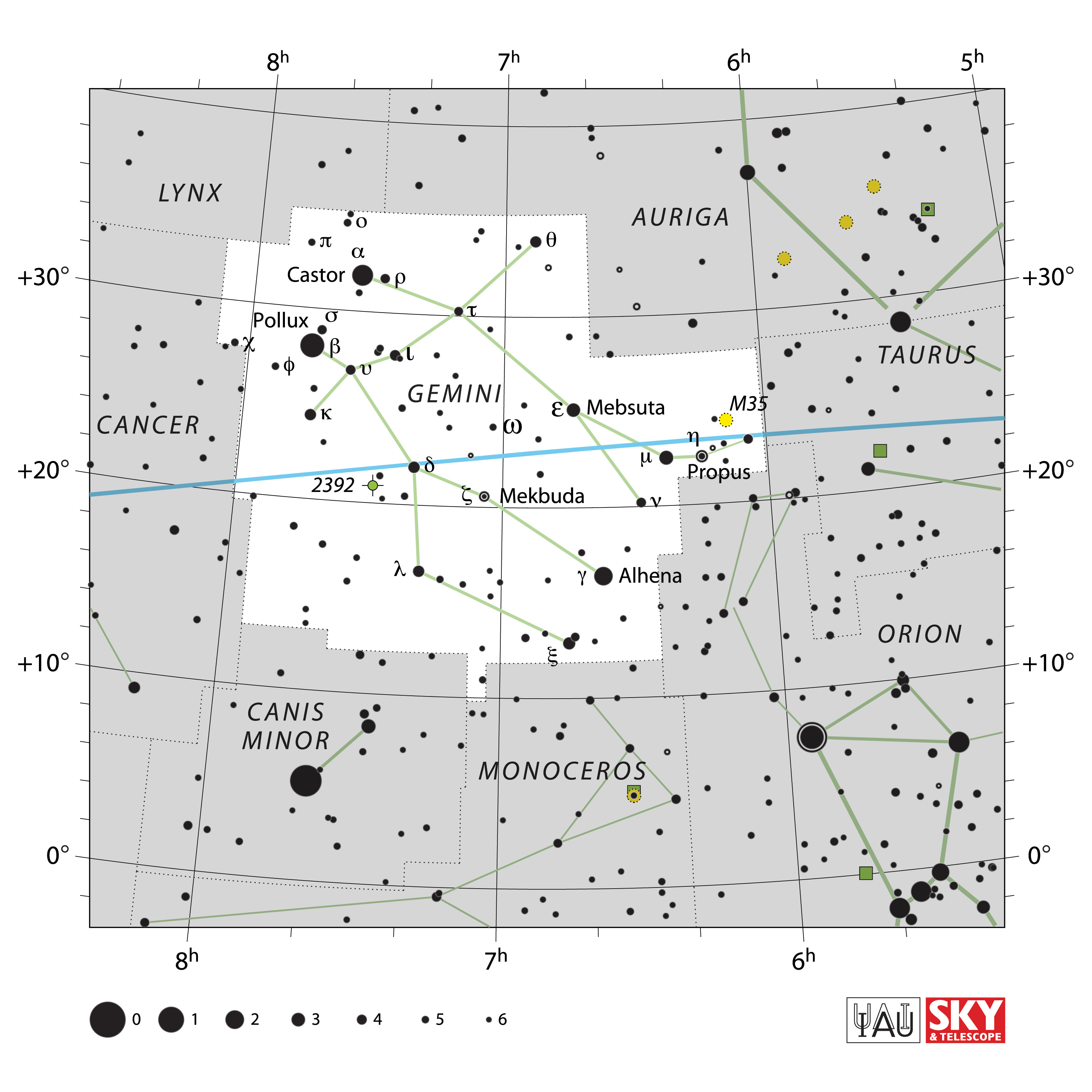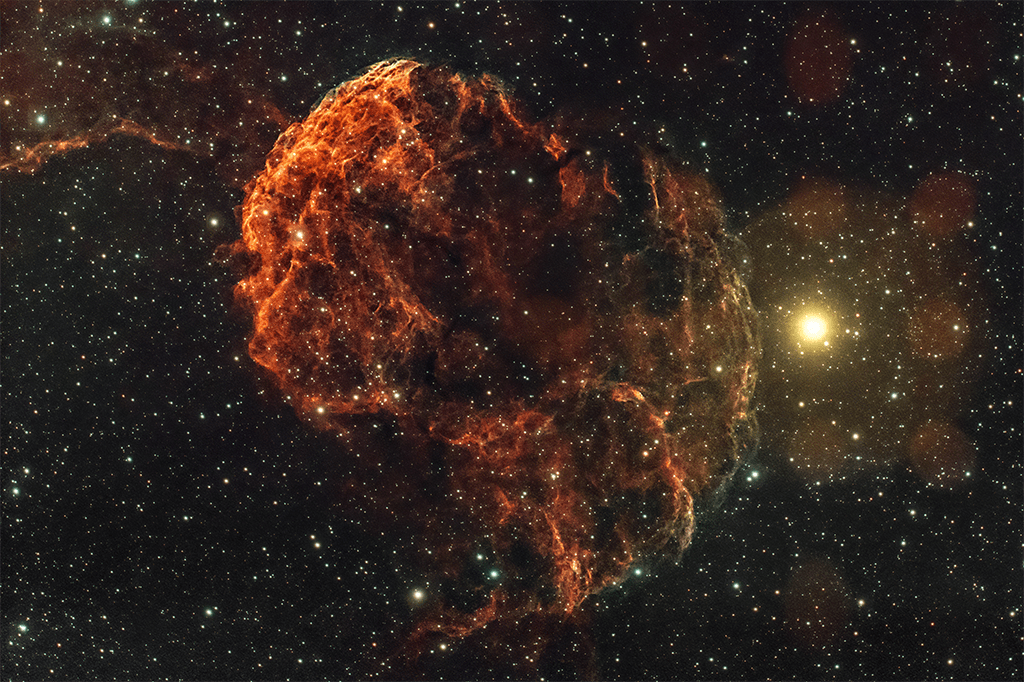This is the supernova remnant catalogued as IC 443. We’re looking at the expanding debris cloud from the explosion of a massive star. The light from that supernova first reached Earth over 30,000 years ago. The Jellyfish Nebula is left of center with its tentacles trailing downwards and to the right. IC 443 is located in the constellation Gemini near the bright star, Eta Gemini, also called Propus. Propus is the bright star right of center.

I really like the detail in the supernova’s expanding shell. You can see many fine tendrils of ionized hydrogen (red) with just a hint of oxygen (blue).

Laue diffraction spots
There are some interesting diffraction artefacts around Propus, in the form of a regular array of spots. After a little reading, I believe it is Laue diffraction. Laue diffraction usually refers to scattering of X-rays by parallel atomic planes within a crystal, which produces an array of spots. In this case, however, I think we have scattering of optical rays (much higher wavelength) by the regular array of pixels on the camera sensor. There’s an interesting discussion on the topic here. If I am correct, the effect is only from the sensor, and not from reflections off the filter.
Hera processing
My astrophotography processing software, called Hera, is still progressing. This image was initially processed in Hera, in which I completed the gradient removal, background neutralization, color calibration, and histogram transformations. I then exported it into Photoshop to apply some denoising with Topaz DeNoise AI, boost the clarity with Camera Raw Filter and apply a tiny extra histogram stretch. (I actually extracted the stars with StarNet first, before the clarity boost and histogram stretch, and then re-added them at the end.) The video below is a demo of me processing a different image, the Dark Shebula Nebula, in Hera.
I am now working on the interface in Hera for À trous wavelets processing, and reading about discrete cosine transformation (DCT) denoising. I plan for this to be the basic denoising option in Hera.
Image details
Frames
- 74× 300-s light frames (Gain 900) from 59 overall (best 80%)
- 4 h 55 min total integrated exposure time from 6 h 10 min overall (best 80%)
- Full use of calibration frames (darks, flats, dark flats)
Equipment
- Explore Scientific ED 102 mm Apo f/7 refractor
- Revelation Adjustable Field Flattener
- Sky-Watcher EQ6-R PRO SynScan GOTO equatorial mount
- Altair Hypercam 294C PRO colour fan-cooled camera
- Altair quad-band one-shot colour (OSC) 2″ filter
- Pegasus FocusCube v2
- Altair 60mm guide scope
- Altair GPCAM2 AR0130 mono guide camera
- Hystou Rugged Fanless Mini PC i5 7260U
Software
- SharpCap 4.0
- PHD2
- DeepSkyStacker
- Hera 0.1.0
- Photoshop
- Topaz DeNoise AI
- StarNet


